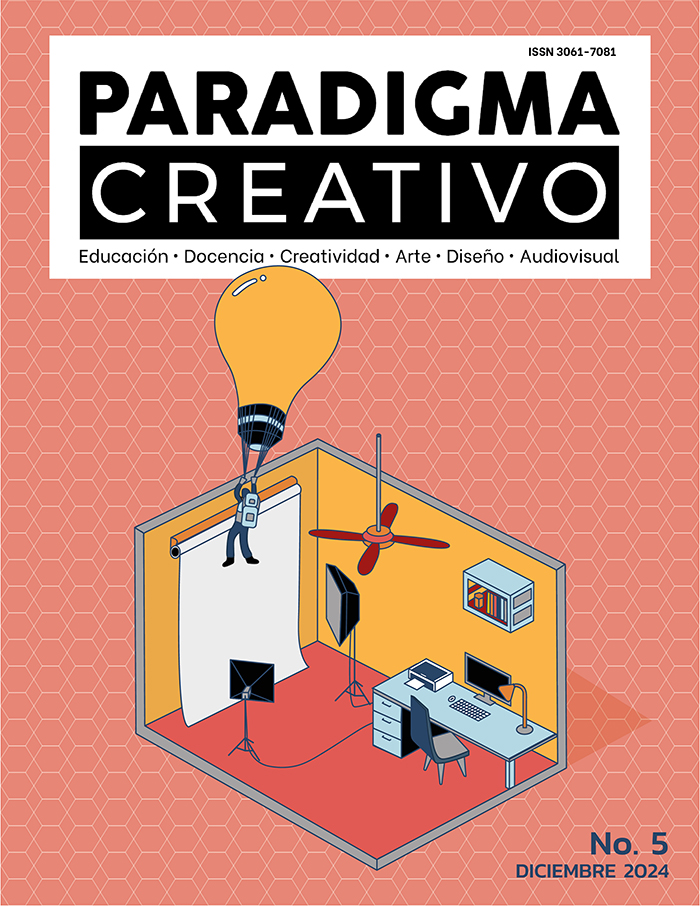Graphic and editorial design in distance learning
The case of the Diploma for the Academy of Transformation at UNIDEH
DOI:
https://doi.org/10.29105/pc.v5i1.43Keywords:
Graphic Design, Distance Education, Continuing EducationAbstract
This article presents the results of the impact that graphic and editorial design had on participants of the Graduates in the Academy of Transformation, offered in a virtual format by the Digital University of the State of Hidalgo. The program aims to professionalize public servants in the State of Hidalgo so that they are informed about their functions, principles, responsibilities, and rights, while also enabling them to act as integral and honest individuals capable of regaining the trust of the citizens. The impact of graphic and editorial design was analyzed throug h responses obtained from a questionnaire developed by instructional and graphic design personnel at UNIDEH, administered to participants of those individual Graduates. The trend observed and indicated that for the majority, they consider graphic and editorial design to be a fundamental part of the teaching-learning process.
Downloads
References
Aguilar Nery, J. (2020). Continuidad pedagógica en el nivel medio superior: acciones y reacciones ante la emergencia sanitaria, en Educación y pandemia. Una visión académica. Recuperado de: https://www.iisue.unam.mx/nosotros/covid/educacion-y-pandemia
D’Agostino, G., Meza, J., & Cruz, A. (2005). Elementos y características del material impreso que favorecen la formación y el aprendizaje a distancia en la uned (Sistematización de características y resultados globales). RIED Revista Iberoamericana de Educación a Distancia, 8 (1-2), 335-366. Recuperado de: https://www.redalyc.org/articulo.oa?id=331427204017 DOI: https://doi.org/10.5944/ried.1.8.1070
Elisava (2022). Diseño editorial: Todo lo que debes saber. Facultad de Diseño e Ingeniería de Barcelona. Recuperado de: https://www.elisava.net/diseno-editorial-todo-lo-que-debes-saber/#:~:text=%C2%BFQu%C3%A9%20es%20el,de%20forma%20clara.
García Aretio, L. (1999). Fundamento y componentes de la educación a distancia. RIED. Revista iberoamericana de educación a distancia, 2(2). Recuperado de: https://gc.scalahed.com/recursos/files/r161r/w24889w/Fund_Compon_Educ_Distancia.pdf DOI: https://doi.org/10.5944/ried.2.2.2076
García Aretio, L. (2001). La educación a distancia. De la teoría a la práctica. Editorial Ariel Educación. Recuperado de: https://www.academia.edu/3260161/La_educaci%C3%B3n_a_distancia
García Aretio, L.(2008). Diálogo didáctico mediado. Editorial del BENED. Recuperado de: https://apidspace.linhd.uned.es/server/api/core/bitstreams/edf3c3fd-afa5-4997-a4b6-7f22258024ae/content
Grupo Banco Mundial (2019). Educación continua: no hay edad para aprender. Recuperado de: https://www.bancomundial.org/es/news/feature/2019/03/12/educacion-continua
López Besa, A. (2023) Qué es el diseño gráfico: introducción, elementos y ramas del diseño gráfico. Recuperado de: https://piktochart.com/es/blog/que-es-el-diseno-grafico/#:~:text=El%20dise%C3%B1o%20gr%C3%A1fico%20es%20el,atraer%20a%20tu%20cliente%20ideal.
Mayer, R. E. (2005). Cognitive Theory of Multimedia Learning. In R. E. Mayer (Ed.), The Cambridge handbook of multimedia learning, Cambridge University Press, 31–48. Recuperado de: https://doi.org/10.1017/CBO9780511816819.004 DOI: https://doi.org/10.1017/CBO9780511816819.004
Pagano Ajolf, M. E. (2024). El rol del diseñador gráfico en el proceso de diseño E-learning. Centro de Estudios en Diseño y Comunicación, 4 (221), 75-93. Recuperado de: https://dialnet.unirioja.es/servlet/articulo?codigo=9673510 DOI: https://doi.org/10.18682/cdc.vi221.11165
Rangel, M. (2012). El diseño gráfico y su relevancia en la Educación a Distancia. Recuperado de: https://revistas.unam.mx/index.php/rmbd/article/download/44484/40186/116591 DOI: https://doi.org/10.22201/cuaed.20074751e.2012.7.44484
UNAM. (s.f.). Preguntas frecuentes. Educación Continua. Recuperado de: https://educacioncontinua.unam.mx/index.php/publico/faqs
Downloads
Published
How to Cite
License
Copyright (c) 2024 Marcos Rubén Sánchez Gálvez, Claudia Ávila Arteaga, Yuliana del Carmen Gómez Ramos, Griselda Ramos Baños, Evelin Susan Islas Amador

This work is licensed under a Creative Commons Attribution 4.0 International License.
Los autores/as que publiquen en esta revista aceptan las siguientes condiciones:
a. Los autores/as conservarán sus derechos de autor y garantizarán a la revista el derecho de primera publicación de su obra, el cual estará simultáneamente sujeto a la Licencia Creative Commons Atribución 4.0 Internacional. que permite a terceros compartir la obra siempre que se indique su autor y su primera publicación esta revista.
b. Los autores/as pueden realizar otros acuerdos contractuales independientes y adicionales para la distribución no exclusiva de la versión del artículo publicado en esta revista (p. ej., incluirlo en un repositorio institucional o publicarlo en un libro) siempre que indiquen claramente que el trabajo se publicó por primera vez en esta revista.
c. Se permite y recomienda a los autores/as a publicar su trabajo en Internet (por ejemplo en páginas institucionales o personales) posterior al proceso de revisión y publicación, ya que puede conducir a intercambios productivos y a una mayor y más rápida difusión del trabajo publicado.




